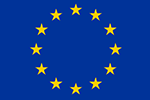Public procurement: Submission of tenders
Content
Electronic submission of tenders
Electronic submission of tenders means that tenderers no longer have to prepare their proposal on paper or go to a physical registry or post office to provide the documents to the contracting authority.
Are tenders always submitted electronically?
Tenders submitted in response to a call for competition or an invitation to tender must be submitted by electronic means, with certain exceptions, as from the entry into force of the Law on Public Sector Contracts in March 2018. Paper has been replaced by electronic means and face-to-face submission by data transfer or the internet.
The law provides for a number of exceptions to the electronic submission of tenders. To find out whether or not a particular procedure is electronic, you must consult the specifications or ask the contracting authority.
Electronic tendering systems
Electronic tenders are submitted online through an electronic tendering system. There are different types of electronic tendering systems. Although they operate differently, they are, in principle, simple programmes with few requirements for use. To find out which one to use for a particular tender, consult the specifications or ask the contracting authority.
When using IT equipment (PC, laptop, etc.) as a tool for preparing tenders, and the internet as a means of sending them, the tenderer must comply with a series of technical requirements, such as an internet connection, use of an electronic signature (digital certificate) and, depending on the electronic tendering system used, the installation of an application or tool for formatting and submitting the electronic proposal.
How is a tender electronically signed?
The submission of tenders by electronic means and data transfer has not altered the requirement that tender documents must be signed, it has changed only the form of signature required: electronic as opposed to handwritten or digital.
The manner of electronically signing the documents forming the tender will depend on the electronic tendering system used. In any event, there are two signing options: signing locally, by downloading a signature application onto your IT equipment or signing directly on the internet, which also requires an element to be downloaded. In both cases, you need to have a digital certificate or electronic ID. For more details on electronic or digital certificates, see the following link![]() .
.
What if I have issues with electronic submission?
The electronic signature on the tender serves to identify the signatory and to guarantee the integrity of the data, in other words to ensure that he content has not been manipulated in any way, and to prove the signatory’s participation in the process.
Contracting authorities must provide tenderers with information on the use of electronic tendering systems and contact details for resolving any questions or issues. For the tender submission tool in use on the public sector procurement platform, which is one of the most widely used electronic tendering systems, a user’s guide![]() and support address are available at the following link: licitacionE@hacienda.gob.es
and support address are available at the following link: licitacionE@hacienda.gob.es
Information for each Autonomous Community














Andalucía Aragón Asturias, Principado de Balears, Illes Canarias Cantabria Castilla y León Castilla-La Mancha Cataluña Ciudad de Ceuta Ciudad de Melilla Comunitat Valenciana Extremadura Galicia Madrid, Comunidad de Murcia, Región de Navarra, Comunidad Foral de País Vasco Rioja, La










